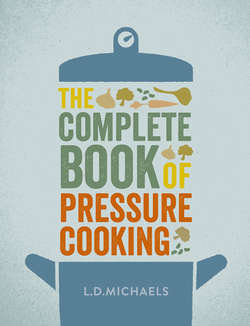Читать книгу The Complete Book of Pressure Cooking - L.D. Michaels - Страница 21
WHEN DO YOU ADD AND ADJUST SEASONING?
ОглавлениеBefore and after cooking time. Since pressure cooking uses far less liquid than ordinary cookery, any seasoning you use will be less diluted by the end of the cooking time, so you use quite a bit less. In pressure steaming, using the trivet, you can add seasonings (salt, pepper and spices) and herbs before cooking starts. Remember that dried herbs are far more concentrated than fresh ones, but that they need rubbing in order to activate them.
In pressure simmering, when you are cooking without the trivet and placing the food in a liquid such as stock, it is best to season first but to leave the herbs until after. Herbs can’t tolerate prolonged high temperatures – the aromatic oils that provide the flavour simply get dispersed or chemically broken down.
For cooking periods in excess of 10–15 minutes, I usually prefer to take the pressure off a little before the correct cooking time is up, open up the pan and then add herbs and check the seasoning by tasting, using a spoon. I then finish off with ordinary cooking in the open pan so that I have perfect control. This method takes only a little longer.
If you are cooking with some of the more aromatic additives used in vegetarian cooking like garam masala, miso and other soya derivatives or sesame oil, then these should be added at the very last moment when the dish is actually cooling down.
